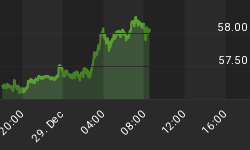U.S. stocks finished lower on Thursday, capping the worst year for the market since 2008. The S&P 500 index, regarded as a benchmark for the broader stock market, lost 0.7% for the year. For 2015, the Dow registered a loss of 2.2%, it's the first down year for the Dow since 2008. Nasdaq was able to finish up 5.7% and the Russell 2000 ended down 6%. The outperformance in the biotech sector and a few of the big tech names helped push the Nasdaq up but its biggest component Apple had its first negative year since 2008. Of the S&P 500 stock components, 301 were down 10% or more from their 52-week highs and 175 were off by at least 20% at year-end, according to Ryan Detrick, market strategist at Kimble Charting Solutions in Cincinnati.
For the week, the S&P 500 slid a modest 0.8%. The Blue Chip-heavy Dow Jones Industrial Average’s fell by 0.7% for the week and the Nasdaq finished the week down 0.6% while the small cap Russell 2000 dropped by 1.6%.

Market Outlook
The S&P 500 index notched a record high on May 21st as middling economic data eased expectations for a rate hike from the U.S. Federal Reserve. But three months later, the index fell into correction territory, a drop of 10% from its high, when signs China's economy may be slowing faster than expected unnerved investors and a Fed rate hike drew closer. Despite the flat performance to finish out the year, stocks grappled with volatility throughout 2015. The S&P has moved at least 1% on a daily basis in either direction 72 times, the most since 2011, according to Standard & Poor's data. Much of the blame for this year's underwhelming stock market performance is due to volatile crude oil prices, which lost a third of their value during an unprecedented global surplus. The energy sector fell 24%, its worst annual performance since the global recession. Eight of the 10 worst performers on the S&P this year were energy companies. The S&P 500 hit its record high only to correct 11% over eight days in August over fears of a China-led global economic slowdown. The CBOE Volatility index spiked to a seven-year high before the market recovered. "If you went to sleep on Dec. 31, 2014, and woke up today, you'd say what a dull year it's been, and yet in between we've had these wild swings," said Donald Selkin, chief market strategist at National Securities in New York.
According to the Stock Trader's Almanac, the direction of January's trading predicts the course for the year 75 percent of the time. Stocks could get a boost next week from the so-called "January effect," when stocks that were sold off in December for year-end tax harvesting rally back in the next month as investors scoop them back up at lower prices. While the overall breadth of the S&P is not promising, that may leave a broader swath of stocks that could see a rebound next month, according to Jeff Saut, chief investment strategist at Raymond James Financial in St. Petersburg, Florida. In the graph below you can see which asset classes led the 4th quarter recovery from the end of summer correction.

Trading Strategy
As confirmed in the graph below, Energy stocks were by far the worst performers among the main S&P sectors. Sectors with gains included Cyclicals, Cyclical Staples, and Health Care after a wave of merger announcements. The flashiest gains came from Technology companies like Netflix and Amazon, with respective jumps of 134% and 118% as they posted strong growth. That contrasted sharply with older Industrial Sector companies like Procter & Gamble, Caterpillar and retailers similar Macy's that saw revenues drop. "2015 was a year where revenues were evasive and investors were attracted to companies that were able to grow their top line," said Jack Ablin, chief investment officer at BMO Global Asset Management.
Expect trading volume to rise next week and don't be surprised if volatility jumps when the varsity gets back on the field next week. Most of the senior traders took a break at the end of year and let the junior varsity traders monitor the trading programs. If a major macroeconomic event occurs traders can easily communicate instructions from wherever they were vacationing.

Along with the return of many investors next week after the holidays, the economic calendar is more active, culminating with Friday's payrolls report. Investors next week will watch for a potential "January effect," when stocks that were sold in December for year-end tax purposes bounce back. In the chart below you can see that in addition to being a top sector performer for the entire year, the Consumer Staples sector was the leading S&P industrial sector over the past month. If traders return to work next year and bid the market higher, it is reasonable to expect stocks in the Consumer Staples sector to take the lead.

Feel free to contact me with questions,
















